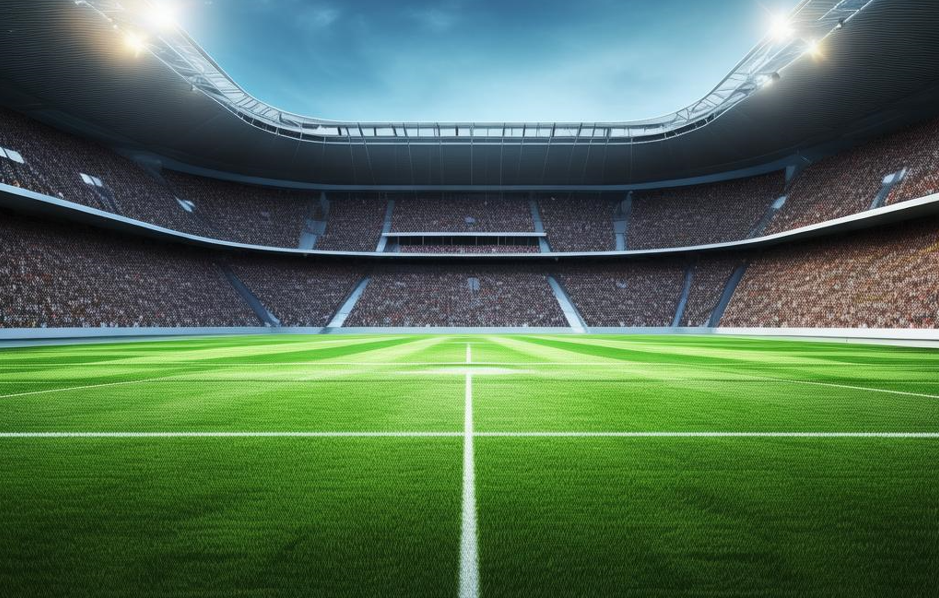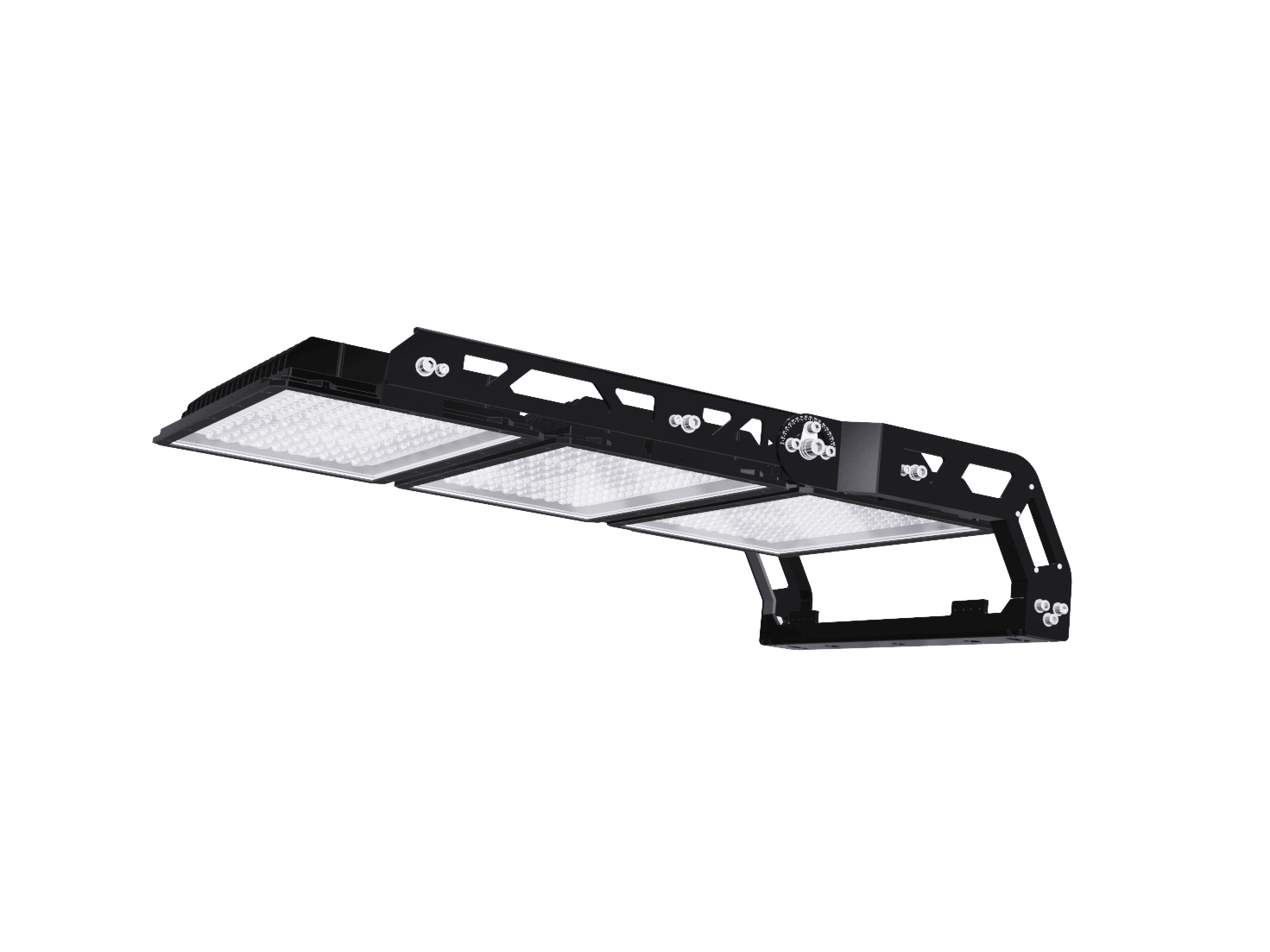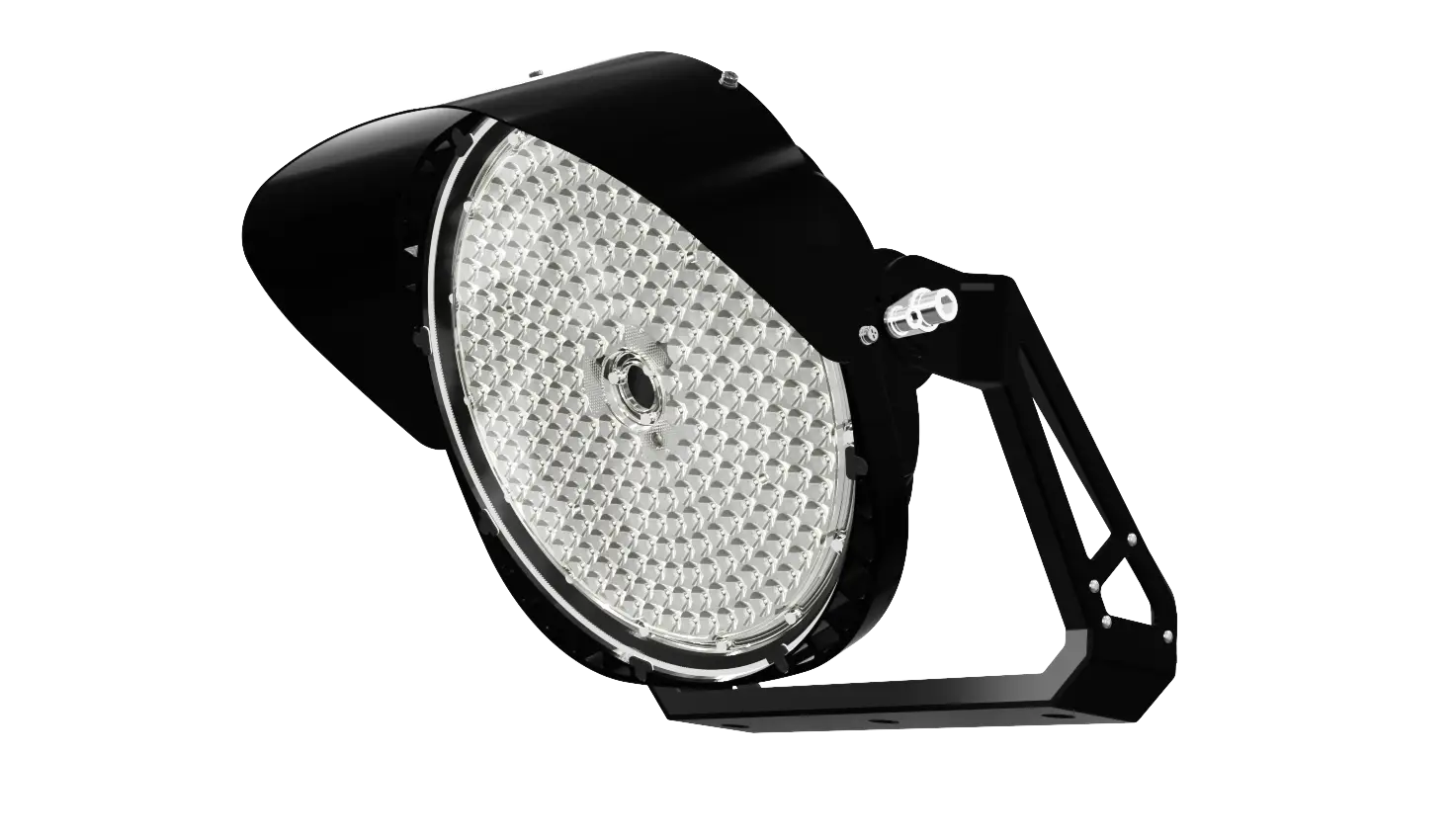How to Set Up Your Soccer Field Lights Without Overspending?
When designing or ungrading a soccer field, many club owners and facility managers are anxious about: How can I find the best options for reliable, cost-effective illumination? Soccer field lights play a crucial role in enhancing player performance and safety during night games.
In this comprehensive guide, we'll show you key aspects like standards, costs, and technology to help you make an informed decision. Whether you're upgrading an existing field or starting from scratch, understanding these details will definitely save you time and money.
Let's explore how to illuminate your soccer field effectively with modern lighting solutions!

Directory:
1. What Are Soccer Field Lights?
2. Key Challenges of Soccer Field Lighting
3. Soccer Field Lighting Standards Explained
4. Traditional vs LED Soccer Field Lighting
5. How to Light Up a Soccer Field at Night (Design Tips)
6. Cost of Soccer Field Lights: From Installation to Maintenance
7. Why Choose Ceramiclite for Soccer Field Lighting?
1. What Are Soccer Field Lights?
Soccer, known as football outside North America, is the world’s most popular sport. A standard soccer match takes place on a large rectangular field — typically 100–110 meters long and 64–75 meters wide — where visibility is crucial for both players and referees.
Because matches often continue after sunset or during cloudy weather, proper lighting is essential to ensure safety, precision, and fair play. Soccer field lights refer to the high-mounted floodlights that illuminate the pitch during night games or training sessions.
l In the past, stadiums commonly used metal halide or halogen lamps. These provided bright light but came with drawbacks: long warm-up times, high energy consumption, and frequent maintenance.
l Today, most professional and community fields have upgraded to LED soccer field lights. LED systems offer instant-on operation, higher brightness consistency, and up to 70% energy savings.
In short, modern soccer field lighting isn’t just about brightness. It’s about delivering uniform, efficient, and durable illumination that meets the demands of fast-paced play and enhances the game experience for everyone on the field.
2. Key Challenges of Soccer Field Lighting
For soccer field managers and club operators, lighting directly impacts game quality, safety, and audience satisfaction. Here are the most common challenges they face:
(1) Uneven illumination
Dark or overlit areas affect how players see the ball and move on the pitch, leading to poor performance or injuries. Consistent lighting (uniformity ≥0.6) is essential for smooth gameplay.
(2) High energy consumption
In the past, sports stadiums usually use traditional halogen or metal halide lamps, which waste energy and drive up electricity bills. Modern LED soccer field lights reduce costs by up to 70% while maintaining brightness.
(3) Frequent maintenance
Outdated lamps burn out quickly and require costly replacements, disrupting match schedules and training sessions. LEDs minimize downtime and maintenance work.
(4) Poor player and spectator experience
Glare, flicker, or dim lighting affects players' focus and spectators' viewing comfort. Properly designed LED systems deliver stable, natural light that enhances both experiences.
(5) Compliance risks
Fields that don't meet FIFA or national lighting standards risk losing certification or event eligibility — a costly setback for clubs and sports facilities.
In short, reliable, energy-efficient lighting isn't a luxury — it's a must for professional performance and an enjoyable soccer experience.
3. Soccer Field Lighting Standards Explained
Designing proper lighting for a soccer field is not just about brightness — it's about balance, clarity, and comfort. Below are the key standards that ensure a safe, fair, and visually pleasing match environment.
(1) High Illuminance (Lux Levels)
Conclusion: The brighter the light, the clearer the game.
Training fields usually require around 200–300 lux, providing enough light for safe movement.
For community or amateur matches, standards rise to 500–750 lux.
Professional or televised games demand 1000 lux or more to ensure visibility for both players and cameras.
Too little light causes misjudgment; too much only wastes energy.
(2) Uniformity Ratio
Conclusion: Lighting must be even — no dark corners or hotspots.
A good soccer field should maintain a uniformity ratio (minimum/average) of at least 0.6.
Uneven lighting makes it difficult for players to track the ball or opponents.
Proper light overlapping, beam angle control, and pole placement help achieve smooth, consistent illumination.
(3) Color Rendering Index (CRI) & Correlated Color Temperature (CCT)
Conclusion: Light should reveal true colors naturally.
A CRI of ≥80 ensures that team uniforms, turf, and the ball appear accurate and vibrant.
Color temperature between 5000K and 6200K provides neutral to cool white light — ideal for visibility, video quality, and visual comfort.
(4) Glare & Light Spill Control
Conclusion: Light should be well-directed — not dazzling or wasteful.
Fixtures must include anti-glare optics or shields to prevent direct light hitting players' or spectators' eyes.
Uncontrolled light spill not only wastes energy but can also disturb nearby residents.
High-quality LED optics keep light precisely where it’s needed — on the field.
(5) Flicker-Free & Broadcast Compatibility
Conclusion: Lighting must stay stable for both play and broadcast.
For televised matches or slow-motion replays, lights must operate flicker-free, even under high-speed cameras.
Modern LED drivers with high-frequency PWM control ensure smooth illumination with no visible flicker or banding on video.
(6) Reference Standards & Compliance
Conclusion: Follow global lighting guidelines for guaranteed quality.
FIFA Football Stadium Lighting Guide – the gold standard for professional venues.
EN 12193 – European benchmark for sports lighting performance.
IES RP-6 – widely used in the U.S. for both indoor and outdoor sports lighting.
4. Traditional vs LED Soccer Field Lighting
Lighting technology has evolved fast. Many soccer fields once relied on metal halide or halogen lamps — bright, but costly and inefficient.
Today, LED soccer field lights dominate the industry thanks to better performance, energy savings, and long-term reliability.
4.1 Quick Comparison
Feature | Traditional Lighting (Halogen / Metal Halide) | LED Soccer Field Lights |
Brightness Efficiency | 60–90 lm/W | 130–180 lm/W |
Startup Time | 10–15 minutes warm-up | Instant on/off |
Lifespan | 5,000–10,000 hours | 50,000–100,000 hours |
Energy Savings | — | Up to 70% lower power use |
Maintenance Cost | High – frequent bulb changes | Very low |
Dimming / Control | Limited | Smart control, adaptive dimming |
Flicker-Free | Often visible under cameras | 100% flicker-free |
Light Spill Control | Hard to manage | Precise optical design |
4.2 Energy & Cost Efficiency
Traditional floodlights convert much of their energy into heat — wasting electricity and increasing cooling needs.
In contrast, LED systems cut energy use by 60–70%, meaning a full-size soccer field that once required 120 kW can now operate efficiently with 40–50 kW.
That's thousands of dollars saved each season.
4.3 Visibility & Player Experience
Halogen and metal halide lights often fade unevenly over time, creating dim zones that affect visibility and fairness.
LED lighting maintains uniform brightness and color consistency throughout its lifespan.
Players enjoy clearer ball tracking and depth perception, while spectators get a more immersive viewing experience.
4.4 Environmental & Maintenance Impact
Traditional lamps contain mercury and require regular replacement — risky and wasteful.
LED soccer field lights are eco-friendly, mercury-free, and require almost no maintenance for years.
Clubs can reduce carbon emissions by up to 50% simply by upgrading to LED systems.
5. How to Light Up a Soccer Field at Night (Design Tips)
Lighting a soccer field at night isn't just about brightness — it's about clarity, balance, and comfort. A well-designed lighting system ensures players, referees, and spectators enjoy a safe and professional match environment. Here's how experts design soccer fields with lights that meet real performance needs.
5.1 Choose the Right Pole Layout
The number of poles depends on the field level, surrounding environment, and competition standard.
Layout | Typical Use | Features |
4-pole system | Training or small community fields | Economical, easy to install, may cause slight shadowing near corners |
6-pole system | Standard amateur or school matches | Balanced coverage, fewer dark zones |
8-pole system | Professional and broadcast-level fields | Excellent uniformity, optimized glare control |
For full-size lighted soccer fields, the 6- or 8-pole configuration is most common. Poles are typically placed symmetrically along sidelines rather than behind goals to minimize glare.
5.2 Height and Angle Matter
Proper mounting height and beam angle ensure the light reaches the pitch evenly without blinding players.
Field Type | Pole Height | Beam Angle |
Training Field | 12–16 m | 25–35° |
Amateur Competition | 16–20 m | 20–30° |
Professional / TV Match | 20–25 m | 15–25° |
Higher poles with narrower beam angles reduce glare and enhance uniformity. Designers often use 3D lighting simulations to fine-tune aiming positions before installation.
5.3 Minimize Shadows and Glare
Uneven lighting or direct glare can ruin visibility and even increase injury risk. To avoid this:
Position fixtures so beams overlap slightly at ground level.
Use asymmetric optics to direct light forward, not backward.
Avoid placing fixtures directly behind the goal line.
Modern LED floodlights with anti-glare visors and precision lenses can focus light exactly where it’s needed — on the field, not the stands.
5.4 Smart Control and Energy Management
Today's LED soccer field lights integrate intelligent systems that allow zoned dimming and scheduled control.
Zoned lighting: Activate half-power for training, full power for matches.
Sensor-based control: Adjust brightness automatically based on time or ambient light.
Remote monitoring: Manage energy use and fixture health from a control dashboard.
This smart flexibility not only saves power but also extends system lifespan.
5.5 Why Professional Design Matters
Each soccer field is unique — different dimensions, surroundings, and competition levels require different lighting plans.
A professional lighting design ensures compliance with FIFA or EN standards, eliminates shadows, and optimizes cost-performance.
At Ceramiclite, engineers provide tailored solutions for every project — from compact community soccer fields with lights to high-end lighted soccer fields built for international play. Every design aims for perfect visibility, comfort, and efficiency.
6. Cost of Soccer Field Lights: From Installation to Maintenance
When planning a lighting upgrade, one of the first questions facility owners ask is: “How much do lights cost for a soccer field?”
The short answer — it depends on your field size, competition level, and technology choice. Below is a breakdown to help you estimate real-world costs.
6.1 LED Fixture Cost
The lighting fixtures themselves represent the largest portion of the budget.
High-quality LED floodlights typically cost $800–$1,500 per unit, depending on wattage and optics.
A standard full-size field may require 20–40 fixtures, leading to $20,000–$60,000 in light heads alone.
While initial cost may seem high, LEDs deliver long-term value — up to 50,000–100,000 hours of life with minimal lumen depreciation.
6.2 Poles, Cabling & Installation
Poles and infrastructure typically account for another 25–35% of total costs.
Steel poles (12–25 m height): $2,000–$5,000 each, depending on design.
Wiring & trenching: $5,000–$15,000 for underground cabling.
Installation labor: varies by country and site accessibility but can reach $10,000–$20,000 for a full setup.
Professional aiming and commissioning are essential to achieve uniform lighting and prevent future rework.
6.3 Control System & Smart Features
Adding a control cabinet or intelligent lighting system can improve flexibility and save energy.
Basic on/off panel: $1,000–$2,000
Smart control (zoned dimming, scheduling, remote app): $3,000–$8,000
While optional, these systems can reduce energy use and simplify management for clubs that host both training and matches.
6.4 Total Project Estimate
Here's a general cost range for different field types:
Field Type | Typical Setup | Estimated Total Cost |
Training or Community Field | 4-6 poles, 200-400 lux | $50,000–$80,000 |
Amateur / School Competition | 6 poles, 500-700 lux | $80,000–$120,000 |
Professional or Broadcast Field | 8 poles, 1000+ lux | $150,000–$250,000+ |
Note: Prices vary by region, pole height, and lighting standard required.
6.5 Maintenance & Energy Savings
LED lighting drastically cuts operational costs compared with traditional metal halide or halogen lamps.
Energy savings: 40–60% less power consumption.
Maintenance: No lamp replacement for 10+ years.
Payback period: Typically 3–5 years, depending on usage frequency and electricity rates.
In addition, LED systems maintain over 80% brightness after 50,000 hours — ensuring consistent visibility and minimal downtime.
6.6 Investing in Long-Term Value
While the upfront price of soccer field lights might seem steep, efficient design and durable components deliver years of reliable performance.
Partnering with trusted manufacturers like Ceramiclite ensures your investment meets both sporting standards and financial goals — balancing brightness, quality, and energy efficiency for every field size.
7. Why Choose Ceramiclite for Soccer Field Lighting?
Choosing Ceramiclite means choosing performance, reliability, and long-term value. Our two flagship models — SL03 and SL04 — are built with advanced ceramic LED cores, delivering powerful illumination, precise optics, and exceptional durability for all types of soccer fields.
(1) SL03 LED Floodlight – High Performance, Built to Last
 Ideal for professional or broadcast-level soccer fields.
Ideal for professional or broadcast-level soccer fields.
Ultra-long lifespan: L80B10 102,000h @45°C, 10-year warranty.
Brilliant visuals: TLCI 90 / CRI 90, perfect for HD broadcasting.
Reliable outdoors: IP66, IK08, C4 corrosion-resistant, 20KV surge protection.
Smart and efficient: DALI 2.0 control, modular design, lightweight for easy installation.
Energy savings: Up to 60% lower consumption vs traditional lighting.
(2) SL04 LED Floodlight – The Ideal Retrofit Choice

Designed for clubs upgrading from HID or metal halide systems.
Plug & play: Easy HID replacement, no major rewiring needed.
Durable: Ceramic LED + flat heat design, IP66/IK08, 10-year warranty.
Smart control: Multi-protocol dimming, anti-glare shields, low light spill.
Cost-effective: Lower labor and material costs, 3-in-1 adjustable wattage.
Why It Matters
Both SL03 and SL04 combine precision lighting with long-term savings, ensuring safe, glare-free, and energy-efficient play environments. Whether you manage a training ground or a professional stadium, Ceramiclite delivers lighting solutions that meet FIFA and EN standards — and perform night after night.
Explore more on Ceramiclite LED Stadium Lights.
8. Conclusion
Choosing the right soccer field lights means achieving perfect visibility, player safety, and lower energy bills. From FIFA-standard illumination to flexible portable setups, modern LED systems have revolutionized night soccer.
Ceramiclite delivers high-performance, certified solutions designed for every level — from community training grounds to professional arenas.
Ready to upgrade your soccer field lights? Contact Ceramiclite today for a customized lighting plan.
9. FAQs
Q1: What are the FIFA lighting standards for soccer fields?
According to FIFA guidelines, training fields should reach around 200 lux, while amateur competition fields need 500 lux.
Professional or televised matches require 1000–2000 lux with uniformity ≥0.7 to ensure clear visuals for players and cameras.
Q2: How many lumens do you need for a soccer field?
The total lumens depend on field size and lighting level:
Recreational field (200 lux): around 1.5–2 million lumens
Standard competition (500 lux): about 4–5 million lumens
Professional match (1000+ lux): up to 10 million lumens or more
LED fixtures with 150–180 lm/W efficiency are ideal for achieving these levels with lower energy use.
Q3: Do LED soccer field lights really last longer than traditional lamps?
Yes. Top-tier LED floodlights last 50,000–100,000 hours, while metal halide lamps typically last 8,000–15,000 hours.
That means LED systems can operate 10+ years with minimal maintenance, making them far more cost-effective long-term.
Q4: How long do soccer field lights last in real use?
Under normal conditions (4 hours per night, 5 days per week), LED soccer field lights can last over 15 years before major replacement is needed.
Proper heat dissipation, surge protection, and scheduled cleaning will further extend their lifespan.
Q5: Do I need government approval to install soccer field lighting?
Usually yes, especially for public or community fields.
Authorities often require documentation for electrical safety, structural design, and light pollution control.
Private facilities have simpler procedures but should still comply with local building codes.
Q6: Does Ceramiclite provide installation and after-sales support?
Absolutely. Ceramiclite provides complete lighting solutions, including: Field lighting design & photometric simulation, On-site installation guidance, Smart control system setup, Long-term maintenance and parts replacement.
Our LED Stadium Lights are engineered for energy efficiency, high brightness, and stable performance, ensuring every soccer field with lights meets professional standards.
Related Blog
High School Football Field Lighting Standards Requirements: Best Led Football Field Lights
NCAA Football Field Lighting Standards:Best Led Flood Lights For football field
